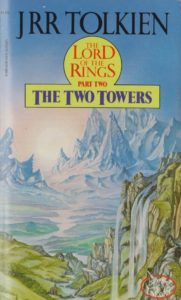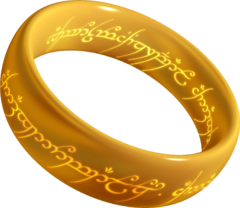Realism And Twenty-first Century Storytelling—A Reprise
 I’ve been watching the five different Star Trek shows on TV. I hadn’t remembered the storytelling in each being particularly different from one another—except for the original which felt void of realism, even artificial at times. I mean, the women wore those ridiculous miniskirts and nearly every episode had the crew shaken and falling. Not to mention that the poor red shirts were doomed to destruction and that Captain Kirk, in all likelihood, would win some female’s heart before the end of each episode.
I’ve been watching the five different Star Trek shows on TV. I hadn’t remembered the storytelling in each being particularly different from one another—except for the original which felt void of realism, even artificial at times. I mean, the women wore those ridiculous miniskirts and nearly every episode had the crew shaken and falling. Not to mention that the poor red shirts were doomed to destruction and that Captain Kirk, in all likelihood, would win some female’s heart before the end of each episode.
What I’ve found by watching the shows night after night is that the storytelling mirrors the storytelling of movies. Some of the earlier shows actually seem a little slow. There’s more dialogue and not as many things blowing up, not as many people falling to phaser blasts. But in the last show, Enterprise, the story line is less thoughtful and more violent. More action packed, too. Though some critics might say there’s more realism, I think that’s debatable.
Storytelling has changed.
We often talk about the need for realism in fiction, particularly in Christian fiction, but when we cite the movies we love, there’s little that is true to reality beyond the externals.
Of course, the externals are important. Who would want to replace the computer enhanced Aslan for an actor dressed in a lion costume? We want our Aslan to appear on the screen as real.
The desire and push for realism in our stories has given impetus to those who believe Christian fiction should include sex, profanity, and vulgarity. After all, those are real.
But where is spiritual realism?
I think there’s something else not particularly real in twenty-first century stories, no matter how real the computer generated characters might appear. We could chalk this up to “that’s just movies” if it weren’t for the fact that screen writing is beginning to dominate the way we write novels, too.
I’ll characterize this unrealistic phenomenon as too much conflict. The Lord Of The Rings illustrates the point.
 Some time ago I watched the last part of Peter Jackson’s The Two Towers on TV shortly after re-reading the Lord Of The Rings trilogy. The main thing I noticed was conflict in the movie where none existed in the book.
Some time ago I watched the last part of Peter Jackson’s The Two Towers on TV shortly after re-reading the Lord Of The Rings trilogy. The main thing I noticed was conflict in the movie where none existed in the book.
For example, in Tolkien’s original once Gandalf had freed Theodin, the king of Rohan, from the influence of Wormtongue, he quickly became his adviser. Théoden did what Gandalf told him to do: trusted Éomer as his new right hand, sent the women and children away to a place of protection (not Helms Deep), prepared his army to march on Isengard, sent out word to gather troops to support Gondor against Mordor. In the film version, however, Théoden fought Gandalf at every turn. He was nearly as depressed and suicidal as Denethor the Gondor steward.
There was also enhanced conflict between Arwen and her father Elrond about her staying in Middle Earth for Aragon. She finally decided to leave–an incident that did not happen in the book.
 Another “it did not happen in the book” example also involved Aragon. On the way to Helms Deep (rather than to Isengard, as the book had it), the people of Rohan were attacked by Uruk-hai and Wargs. In the battle, Aragon was dragged over a cliff and fell to the river. His companions presumed him to be dead.
Another “it did not happen in the book” example also involved Aragon. On the way to Helms Deep (rather than to Isengard, as the book had it), the people of Rohan were attacked by Uruk-hai and Wargs. In the battle, Aragon was dragged over a cliff and fell to the river. His companions presumed him to be dead.
Then, too, Treebeard and the Ents decided they would not help in the war against Saruman. Merry and Pipin tried to talk him into it, but he refused, only promising to take them out of the forest at whatever point they wished. On the way, they came to a place where Saruman’s forces had destroyed the trees, and the Ents then arose and fought. The motivation in the book is the same, but the conflict between the hobbits and the Ents never existed.
In the segments concerning Frodo, there were more of these manufactured conflicts. Frodo and Sam argued about the effect the ring had and about their disparate treatment of Gollum. Then too, Faramir insisted on taking Sam, Frodo, and Gollum to Gondor with the intent to use the ring (which they spoke of openly in front of all Faramir’s men) in the battle against Mordor. When they reached Osgiliath, they were attacked by one of the Nazgul. Under the influence of its presence, Frodo acted as if he’d been possessed and nearly put on the ring. Faithful Sam tackled him to stop him and they wrestled, with Frodo pulling his sword on Sam. None of this happened in the book.
As I thought about these differences, it seems to me that the movie was faithfully following the dictates of writing instructors who tell writers to make life hard for their characters and when it’s as bad as it can get, make it worse.
But is that reality?
Do friends always turn against one another? Does the hero always fall to his apparent death? Do the once mighty always succumb to discouragement and despair? Does doubt and fear always push loved ones to leave?
The answer is, no.
Tolkien got it right in his version of The Lord of the Rings—he told a realistic story. Borimir succumbed to the power of the ring, but Faramir did not. Denethor became suicidal, but Théoden did not. Gandalf fell to his apparent death, but Aragon did not.
 In showing the strength of Faramir, the healing of Théoden, the prowess of Aragon, Tolkien enhanced Borimir’s failure, Denethor’s selfish choice, and Gandalf’s sacrifice. In other words, by not taking every character to the brink before leading them back, he magnified each case in which a character was taken to the brink.
In showing the strength of Faramir, the healing of Théoden, the prowess of Aragon, Tolkien enhanced Borimir’s failure, Denethor’s selfish choice, and Gandalf’s sacrifice. In other words, by not taking every character to the brink before leading them back, he magnified each case in which a character was taken to the brink.
If all characters are victims of disaster, I suggest readers or viewers stop caring and start looking for the “out.” Will the character die and come back? Have a narrow escape? Have a death that only looks like death? In truth, all the arguing and betrayal and refusal becomes . . . predictable and boring and unrealistic. Soon the characters seem more like caricatures because none acts with nobility or courage or hope. All display their flawed selves with so little inner struggle. And this, we’ve come to believe, is realistic.
Perhaps this twenty-first century version of realism is another way in which we are not addressing spiritual issues realistically. We are, after all, made in God’s image. We have within us a moral sense of right and wrong. We also have a sin nature. In essence, we are divided at our core.
We experience the truth of Romans 7 day in and day out, doing the thing we hate and neglecting the thing we know we should do. We struggle in the inner person. But Romans 8 follows, too. We revel in the freedom from the law of sin and death, we experience God’s sovereign purpose to work all things for our good, we enjoy His nothing-can-separate-us love. In short, reality is a mixed bag along the journey. It’s not all bad until the miraculously impossible reversal.
In story writing, I believe in conflict, I really do, though I believe in tension more. I wonder if twenty-first century authors aren’t needlessly creating artificial, big-bang conflict when inner-struggle tension, more true to life, actually would make for a better story. Tolkien’s work convinces me that more external conflict isn’t particularly realistic nor is it always the best.
The greater part of this post is an edited version of one that first appeared here in January 2013.
































The problem is that in movies and television shows (e.g., the VISUAL media), it is extremely difficult to portray inner struggles. It can be done, but is difficult to pull off effectively (e.g., voice-over narration, or key close-ups showing what the character sees (or showing memories), or of course a top-notch actor capable of portraying even the deepest emotions on his or her face). And because it is so hard, portraying inner thoughts can’t be done too often in the movie, or the audience will find it tedious to follow the storyline. And so, most every conflict needs to be an external one, so we the audience can ~see~ it.
Only in books and stories (the VERBAL media) can an author discuss what’s going on inside a character’s mind, and do so as often as he or she wants. This is just endemic to the two media. But what is kinda sad, is when authors bend and shape their stories to fit the visual media’s limitations (because of course we all hope to get a film option and make beaucoup bucks some day 😉 instead of fully exploring the deeper capabilities of the verbal medium.
But then, Tolkien only gives us inner monologues in Sam Gamgee, and only in a very limited way. Every other aspect of the story’s character development is external – through their actions and interactions with the other characters.
This isn’t an issue of adaptation to a different medium, it’s an issue of lazy writing and simplistic characters. It’s a lack of trust in the audience’s intelligence and taste.
Subtlety is an art in film as well as books. And it’s an art that Jackson seems pretty much devoid of.
This is exactly why I can’t enjoy these movies. The constant cheep peril and character conflict just annoys me too much. And it shows a deep lack of understanding of both Tolkien and his characters.
I understand the process of adaptation. But it only works if you understand WHY a character did what he did in the book. Not just that he did it.
And Jackson’s misunderstanding, or total lack of respect for his source material, sets my teeth on edge when I watch LOTR.
That, and he had the gaul to turn Éowyn – shieldmaiden of Rohan – into a whiny “girl power” chick complaining about not getting to fight on the front lines,* and then says Tolkien didn’t write any female characters, so he can give Aragorn’s love interest more screen time. Because heaven forbid they give the woman who DOESN’T end up with our favorite male hero the limelight. ?
*If you’re confused – in the book she’s chosen as the only one they can send to lead the civilians when they flee to the mountains. She can’t fight on the front lines because she’s supposed to be miles away from Helms Deep. She’s not being told to cower in the caves, she’s told to take on the mantel of queen, possibly permanently, should her uncle and brother die in battle, and protect her people. And she’s conflicted between her duty, her love for her people, and the cold dread inside that her life will never have mattered in the end. That she has no destiny, that she has no value. And when she sees Aragorn and understands his kingly destiny – the thing she so desperately craves for herself – she’s attracted to that in him, and interprets it as love. (This as a danger people fall into when choosing a romantic partner here in the real world.) He calls it out for what it is, and so, thinking that her one chance of destiny has been denied her, she rides to her intended death on the Pelennor. Her choice for Faramir in the end isn’t a consolation price. It’s an acceptance of herself, of living her own life and her own destiny.
…. I was so not planning to write all that… gosh I’m such a nerd… ?
Ha, I’ve been casually rewatching most of the Star Trek series, and I am seriously baffled by what the designers of TNG thru Voyager thought would work as civilian clothing in the future. Ugly onesie, ugly onesie, ugly onesie. Are the Maquis required to wear mismatched brown potato sacking? What the heck is with that ugly crochet/macrame/yarn barf vest, Major Kira?